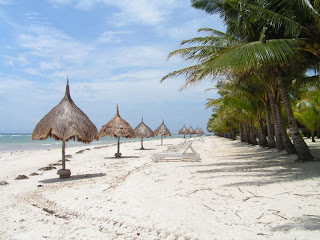Mayon Volcano
posted under
Philippine Natural Wonders
by Philippine Destination

 Mayon Volcano is an active volcano in the Philippines on the island of Luzon, in the province of Albay in the Bicol Region. Its almost perfectly-shaped cone is considered by some to be the Philippine equivalent of Mount Fuji in Japan.The volcano is situated 15 kilometres northwest of Legazpi City.
Mayon Volcano is an active volcano in the Philippines on the island of Luzon, in the province of Albay in the Bicol Region. Its almost perfectly-shaped cone is considered by some to be the Philippine equivalent of Mount Fuji in Japan.The volcano is situated 15 kilometres northwest of Legazpi City.Mayon is classified by volcanologists as a stratovolcano. Its symmetric cone was formed through alternate pyroclastic and lava flows. Mayon is the most active volcano in the country, having erupted over 50 times in the past 400 years.
It is located between the Eurasian and the Philippine Plate, at a convergent plate boundary: where a continental plate meets an oceanic plate, the lighter continental plate overrides the oceanic plate, forcing it down; magma is formed where the rock melts. Like other volcanoes located around the rim of the Pacific Ocean, Mayon is a part of the "Pacific Ring of Fire".
Source: wikipedia, flickr & byahilo.com











 Surigao del Norte is a mosaic island in the northeastern tip of Mindanao. A province that has managed to preserve its natural marvel through the years. A tropical jewel that hosts one of the most beautiful beaches in the world and home of wave surfing, the latest sport and tourist attraction to take the country by storm.
Surigao del Norte is a mosaic island in the northeastern tip of Mindanao. A province that has managed to preserve its natural marvel through the years. A tropical jewel that hosts one of the most beautiful beaches in the world and home of wave surfing, the latest sport and tourist attraction to take the country by storm.








